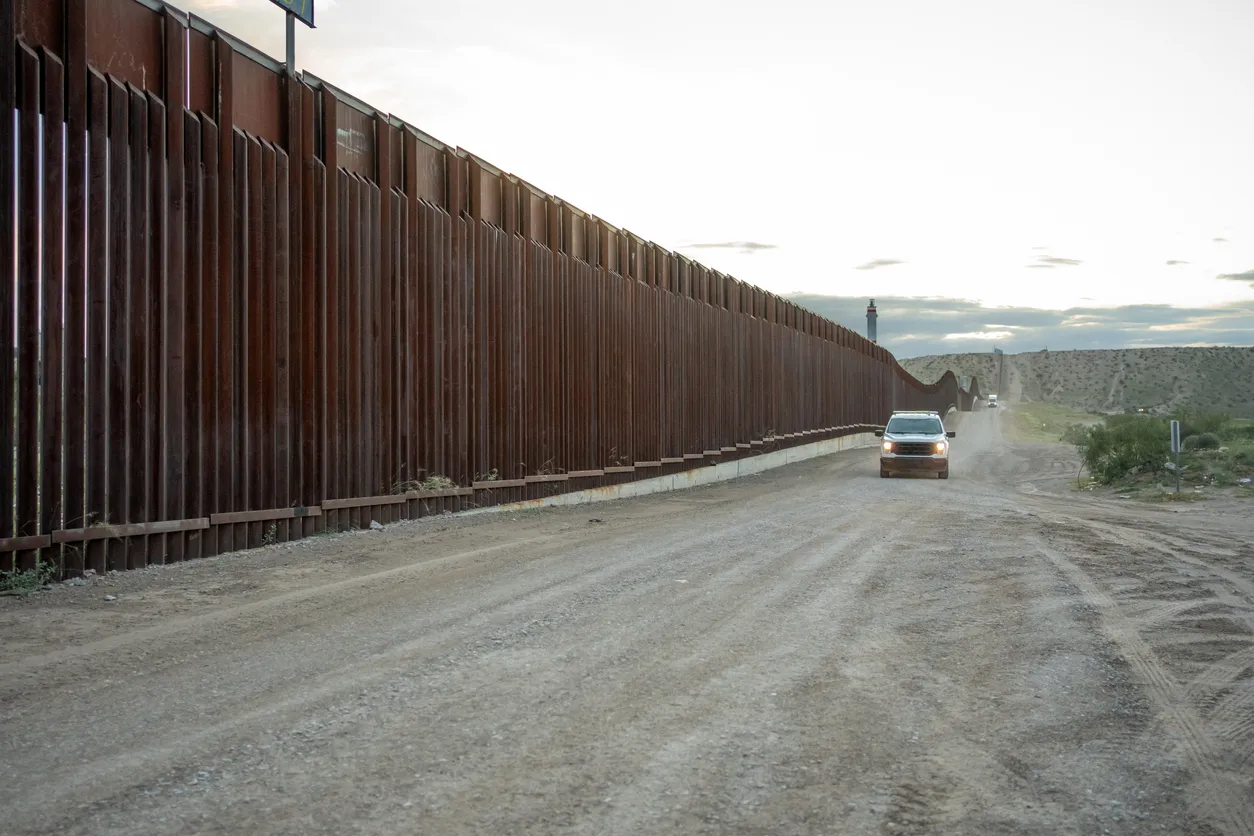Agencies along and near each border, land and maritime, keep border security a top priority as they manage community safety with border security, while tracking emerging threats and transnational crime. Additionally, these agencies are tasked with securing the US’s extensive and often rugged border areas, deterring criminal activities, and ensuring public safety—all while facing challenges like funding shortfalls, staffing shortages, and technology implementation and integration.
Using technology with advanced analytics can provide critical insights into border security while helping law enforcement agencies proactively address security challenges. Agencies can leverage AI and machine learning in near real-time for data analysis to optimize patrol strategies, identify high-risk areas and emerging threats, and allocate resources more efficiently.
Challenges in Border Security
Securing the U.S. border presents complex challenges for law enforcement agencies. Funding constraints often limit the ability to hire sufficient personnel, acquire necessary equipment, and implement advanced technologies. Manpower and resource limitations make it difficult to effectively monitor vast and rugged border areas, leading to gaps in security coverage. Transnational criminal organizations exploit these gaps to smuggle drugs, weapons, and human trafficking victims across the border, creating significant enforcement challenges.
Additionally, public and political pressure surrounding border security policies can shift rapidly, affecting operational priorities and complicating law enforcement strategies. Addressing these challenges requires a multi-faceted approach, leveraging funding and technology to enhance border security effectiveness.
Funding Options for Border Security
Funding for border security is available from multiple federal sources, including the Department of Homeland Security (DHS), the Department of Justice (DOJ), and through Congressionally-directed spending, commonly known as “earmarks.” Many of these funding opportunities do not require a funding match, making them more accessible for agencies with limited budgets. Leveraging these federal funds, agencies can invest in personnel, technology, and infrastructure to enhance operational effectiveness along the border.
Some federal programs fund states, offering grants to local law enforcement agencies. Key programs for border security include:
- Operation Stone Garden (OPSG): OPSG provides funding to enhance cooperation and coordination among federal, state, local, tribal, and territorial law enforcement agencies to jointly enhance security along the United States land and water borders. This program supports joint efforts to secure borders along routes of ingress from international borders, including travel corridors in states bordering Mexico and Canada and states and territories with international water borders.
- State Homeland Security Grant Program (SHSGP): This grant program through the Federal Emergency Management Agency (FEMA) supports state, tribal, and local programs to support preparedness and homeland security strategies to address potential public safety risks.
Other geographically determined funds, such as the Urban Areas Security Initiative or the High Intensity Drug Trafficking Areas, may be available depending on the agency’s location and program needs.
Using Innovative Technologies Along the Border
The use of advanced technology in border security enhances operational capabilities while saving staff time. Automated solutions such as artificial intelligence (AI) driven analytics, data integration, and integrated systems reduce the need to search multiple systems or enter data in various places, allowing law enforcement personnel to focus on high-priority tasks.
AI-powered and advanced data analytics can quickly search vast amounts of information, finding leads cross-jurisdictionally—which can be paramount in transnational crimes like firearms, drug and narcotics trafficking, and human and sex trafficking. Additionally, automated reporting, dashboards for oversight, and case management systems help officers spend less time on paperwork and more time on strategic law enforcement activities.
Determining Your Agency’s Priorities
Technology like automated license plate recognition (LPR), quick searches across multiple databases, acoustic gunshot detection, and integrated systems minimize the manual effort that often pulls agency staff away from proactive patrol. Determining the right tools to help maximize efficiency, improve intelligence-sharing, enhance situational awareness, and effectively investigate and prosecute crimes, depending on your agency’s priorities, is critical before seeking funding or implementing new technology.
- Data Sharing and Analysis: A powerful investigative search engine, CrimeTracer™ enhances agency data sharing and searching capabilities by accessing more than one billion records. CrimeTracer uses advanced link analysis to identify relationships between people, places, and events quickly. Sharing data cross jurisdictionally enables law enforcement to connect disparate pieces of intelligence, leading to more effective identification, interdictions, and dismantling of smuggling networks.
- Searching Investigative Leads: Along with CrimeTracer’s ability to instantly find investigative leads and connections, PlateRanger’s license plate recognition (LPR) solution can scan and identify vehicles potentially involved in illegal activities, such as human trafficking or drug smuggling. PlateRanger™ powered by Rekor® captures vehicle make, model, and color and can track vehicles that regularly travel together. By integrating with systems like CrimeTracer, CAD, RMS, and CaseBuilder, PlateRanger enhances investigations by linking vehicle movements with broader criminal activities.
- Gunfire Detection and Response: Gunshot detection technology like ShotSpotter® can identify and locate gunfire in communities, enabling law enforcement to respond swiftly. ShotSpotter provides real-time gunfire detection, helping officers locate threats, recover ballistic evidence, and respond to violent incidents more effectively. Locating more ballistic evidence to enter into NIBIN (National Integrated Ballistic Information Network) can also provide additional investigative leads.
- Investigation Management: Inefficient investigations slow down prosecutions and require excessive staff time. CaseBuilder™ streamlines case management, while PlateRanger enables faster vehicle identification, linking suspects to criminal activities. CaseBuilder is particularly effective for managing large investigations that involve numerous connections, leads, and multiple agencies.
- Intelligence and Proactive Patrol Management: Leveraging historical agency data, ResourceRouter™ can identify high-risk patrol locations and provide up-to-date information to patrol officers at their fingertips. This technology helps manage patrol assignments effectively by assisting agencies in directing limited personnel to areas most needed to deter crime while providing operational oversight.
Contact us to Learn How SoundThinking Can Help Your Agency with Border Security
Planning for the Future
Policing and communities’ needs change, especially near the borders, and law enforcement strategies must continuously adapt. Partnerships between agencies and public safety vendors are more important than ever to keep communities safe. Law enforcement must also lean on technology innovations, including artificial intelligence (AI) and machine learning (ML), as criminals use advanced technologies for illegal and illicit activities. Additionally, adopting AI and ML technology enhances law enforcement capabilities by automating data analysis, detecting criminal patterns, optimizing resource deployment, and so much more.
Integrating emerging technologies into intelligence gathering and enforcement efforts allows law enforcement to stay ahead of emerging threats. Situational awareness tools and advancements in patrol technology using AI and ML provide agencies with near real-time insights, enabling quicker and more informed decision-making. This holistic approach reduces administrative burdens, bolsters investigations, and ensures law enforcement personnel can focus on proactive crime prevention and strategic responses, improving public safety.




